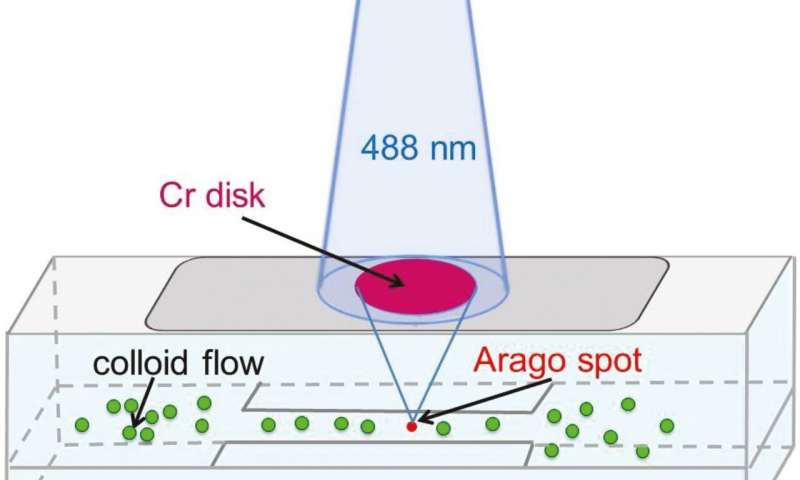
By exploiting a particular property of light diffraction at
the interface between a glass and a liquid, researchers have demonstrated the
first optical tweezers capable of trapping nanoscale particles.
Optical tweezers are a rapidly growing technology, and have opened up a wide variety of research applications in recent years. The devices operate by trapping particles at the focal points of tightly focused laser beams, allowing researchers to manipulate the objects without any physical contact. So far, optical tweezers have been used to confine objects just micrometers across—yet there is now a growing desire amongst researchers to extend the technology to nanometre-scale particles. In new research published in EPJ E, Janine Emile and Olivier Emile at the University of Rennes, France, demonstrate a novel tweezer design, which enabled them to trap fluorescent particles just 200 nanometres across for the first time.
If made available for widespread use, nanoscale optical traps could be used for experimental procedures requiring extreme degrees of precision—including direct measurements of nanoscale forces, alterations of cell membranes, and manipulations of viruses and DNA strands. Emile and Emile's design was based around "Arago spots': bright points of light which form in the centers of circular shadows, as light diffracts around the objects creating them. In addition, they relied on the principle of 'total internal reflection' – where light rays hitting a glass-liquid interface at just the right angle are perfectly reflected.
In the experiment, the duo fired a perfectly aligned laser beam onto the interface between a glass plate, and a liquid containing suspended fluorescent nanoparticles; with an opaque circular disk partially blocking its path. The resulting Arago spot was then totally reflected at the interface, creating an exponentially fading wave which ran out from the spot in all directions. Finally, suspended nanoparticles could be positioned inside this donut shaped wave, and excited by a separate laser to emit light themselves. The resulting forces imparted by these light waves caused the particles to become tightly confined at the Arago spot. With further improvements to this setup, nanoscale optical tweezers could soon open new opportunities for research, in areas ranging from medicine to quantum computing.

 Previous page
Previous page Back to top
Back to top







